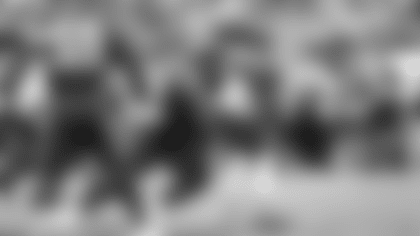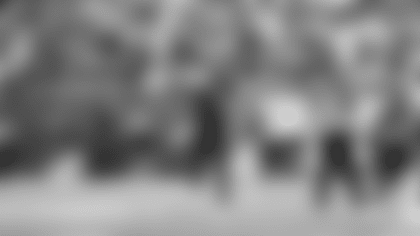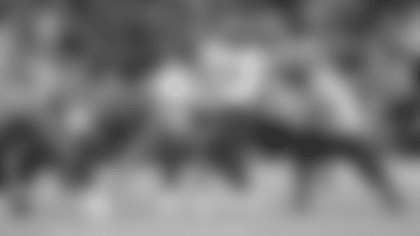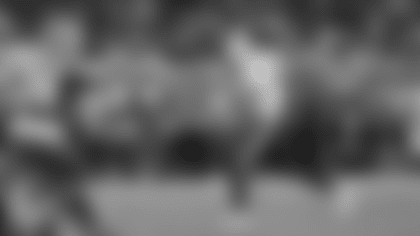Throughout the first month of the offseason, the Vikings have placed much of their focus on improving their defense, including hiring Brian Flores as the team's newest defensive coordinator a mere 16 days ago.
While Minnesota's defense will remain an important topic of conversation during the coming months of free agency, the scouting combine and the draft, its offense will serve a crucial role in the team's direction in 2023.
Matthew Coller of Purple Insider looked at what needs to improve on the offensive side of the ball for the Vikings so that Minnesota can make a deeper playoff run next season.
In 2022, the Vikings were one of the NFL's stronger teams on offense. Minnesota ranked in the top 10 in multiple areas, including points per game (24.9, eighth), yards per game (359.8, sixth) and red zone scoring percentage in touchdowns (63.2 percent, eighth). The Vikings were also ninth in the league in Expected Points Added (EPA) on that side of the ball with 89 points.
Coller wrote compared to Kansas City and Philadelphia, though — who just played in Super Bowl LVII — the Vikings have a lot of ground to cover in terms of EPA.
The distance between the No. 1 and No. 8 offense is far greater than No. 8 and No. 16. By how much? The Vikings (ninth) were only 26 points better than the 16th ranked team (Seattle) but 192 points behind Kansas City and 137 short of Philadelphia. Even the 2021 Bengals were farther ahead of Minnesota than the Vikings were above an average team this year.
Coller also broke down where the Vikings rank in offensive EPA against teams that have appeared in the Super Bowl since 2019. Here are the results:
— 2022 Vikings (89 points)
— 2022 Chiefs (281 points)
— 2022 Eagles (226 points)
— 2021 Bengals (118 points)
— 2021 Rams (161 points)
— 2020 Chiefs (280 points)
— 2020 Buccaneers (246 points)
— 2019 Chiefs (263 points)
— 2019 49ers (140 points)
The average Super Bowl team in the past four seasons has recorded an offensive EPA of 214 points. So how can Minnesota close that gap?
Coller noted the first area to improve that total is the run game. He wrote:
At minus-15 points, the Vikings ranked 27th in rushing EPA. They were 118 points short of the Eagles (No. 1) and 68 points behind the Chiefs. The 16th ranked team's running game was worth 25 more points than the Vikings. Part of that number is influenced by the Vikings ranking 27th in carries but they were also 26th in yards per attempt.
Since 2015, the NFL has seen an increase from four teams that posted at least plus-10 in running EPA to 16 in 2022.
On the other side of the offensive coin, Minnesota ranked seventh in total passing EPA, its highest finish since 2017 (fourth). But from an EPA per-drop-back standpoint, the Vikings (0.17) were well short of the four conference championship teams this past season (Chiefs 0.34; 49ers 0.31; Eagles 0.23; Bengals 0.22).
Coller wrote the biggest areas the Vikings pass game struggled with in 2022 were negative and explosive plays.
Minnesota only ranked 12thin net yards per attempt when adjusted for sacks and interceptions. The Vikings had the eighth-most sacks (334 yards lost to sacks) and seventh-most interceptions and finished 16thin passing plays of 20-plus yards. The top two teams in 20-plus yard throws? Kansas City and Philadelphia.
Going into next season, Coller said while improving facets such as the play-action and screen games would help the Vikings offense, what could boost Minnesota into the next tier of contending teams is shoring up its interior offensive line and finding additional downfield weapons. He wrote:
Better pass protection and more unstoppable weapons, i.e. Philadelphia/San Francisco, probably make up a good chunk of the answer to the Vikings good-not-great conundrum.
Despite sporting two elite tackles, Minnesota still graded 19th overall in pass blocking and had two of the top five guards in pressures allowed. Of teams to make the Super Bowl, only the 2021 Bengals had a worse pass blocking grade than the Vikings and both clubs in 2022 ranked in the top 10.
There's also a need for someone aside from Justin Jefferson to make plays downfield. Jefferson had 17 catches that traveled more than 20 yards from the hand of Kirk Cousins in 2022. The rest of the team had 11 combined (per Pro Football Focus). Third receiver K.J. Osborn only had 10 receptions on 27 throws that traveled beyond 10 yards.
Pro Football Focus ranks top 25 interior defenders from 2022
Conversations about NFL defenses typically start with a team's pass rush. And while edge rushers garner much of that attention, there are many players on the interior defensive line that can impact the game just as much.
Jonathon Macri of Pro Football Focus recently unveiled his top 25 NFL interior defenders from the 2022 regular season and a couple of Vikings made the list.
Macri placed Dalvin Tomlinson 15th. He wrote:
With just 2.5 sacks on the season, it's easy to overlook Tomlinson's impact as an interior pass-rusher. Still, his 79.1 pass-rush grade (11th among [interior linemen]) and 29 total pressures for a 9.90 precent pressure rate (23rd) are career highs for the former Alabama product. Tomlinson has been nothing short of solid in his NFL career, as he's never posted a sub-74.9 overall grade in six seasons.
Macri also listed Harrison Phillips 24th. He wrote:
Phillips' first season with the Vikings was significant, as he played all 17 games, which led to the most defensive snaps he's played in a season (693). Phillips' impact is predominantly felt as a run defender, where he earned a 73.6 run defense grade (T-10th, minimum 50 percent of snaps) and helped his new team finish second in the league in run-defense grade (86.1) after it ranked among the bottom half of the league in that category the year prior before adding him with a three-year contract.






















